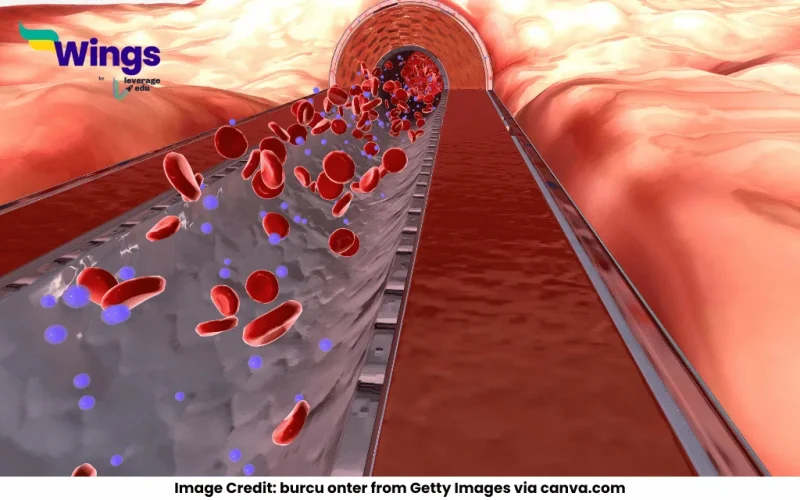The main function of capillaries is to facilitate the exchange of oxygen, nutrients, and waste products between blood and tissues. These tiny blood vessels play a crucial role in the circulatory system, acting as a bridge between arteries and veins.
Understanding Capillaries
Capillaries are the smallest blood vessels in the human body, with walls that are only one cell thick. This unique structure allows for efficient diffusion of substances between blood and surrounding tissues. They form an extensive network, ensuring that every cell in the body gets the required nutrients and oxygen while removing waste materials like carbon dioxide.
Structure of Capillaries
Capillaries have a simple yet highly effective structure:
- Thin Walls: Made up of a single layer of endothelial cells, allowing for easy diffusion.
- Small Diameter: Their narrow size enables red blood cells to pass through in single file, ensuring effective exchange.
- Extensive Network: They are densely distributed in tissues with high metabolic demands, such as muscles and the brain.
Types of Capillaries
There are three main types of capillaries, each adapted to specific functions:
1. Continuous Capillaries
- Found in most tissues such as the skin, muscles, and lungs.
- Have tightly packed endothelial cells, limiting permeability.
- Allow small molecules like glucose and oxygen to pass while restricting large proteins.
2. Fenestrated Capillaries
- Found in the kidneys, intestines, and endocrine glands.
- Have small pores (fenestrations) that enhance permeability.
- Facilitate rapid exchange of nutrients, hormones, and waste products.
3. Sinusoidal Capillaries
- Found in the liver, spleen, and bone marrow.
- Have large gaps between endothelial cells, allowing the movement of large molecules and even blood cells.
- Essential for the filtration and transfer of substances like proteins and cells.
Functions of Capillaries
Capillaries perform several essential roles in maintaining bodily functions:
1. Gas Exchange: Oxygen from the blood diffuses into tissues, while carbon dioxide from tissues enters the blood to be transported to the lungs for exhalation.
2. Nutrient Delivery: Capillaries supply glucose, amino acids, and other essential nutrients to cells for energy production and growth.
3. Waste Removal: By absorbing waste products like urea and lactic acid, capillaries help in detoxification and maintaining homeostasis.
4. Hormone Transport: Capillaries enable the distribution of hormones from endocrine glands to target organs, ensuring proper physiological regulation.
5. Immune System Function: Capillaries help transport white blood cells to infection sites, aiding the body’s defense mechanisms.
The Role of Capillaries in Disease
Capillary function can be affected in various medical conditions, leading to significant health complications. These tiny vessels are vulnerable to damage from various factors, impacting their ability to efficiently transport blood and nutrients. Below are some common conditions affecting capillaries:
1. Diabetes: Diabetes can cause damage to capillaries, leading to poor circulation, particularly in the eyes, kidneys, and extremities. A major complication is diabetic retinopathy, where damaged capillaries in the retina cause vision impairment and, in severe cases, blindness. In the kidneys, damaged capillaries may contribute to diabetic nephropathy, affecting filtration and leading to kidney disease.
2. Hypertension: Chronic high blood pressure exerts excessive force on capillary walls, making them more susceptible to damage. Over time, this can result in capillary leakage, reducing their efficiency in delivering oxygen and nutrients. Capillary damage in the brain may also increase the risk of strokes and cognitive decline due to inadequate blood supply.
3. Edema: When capillaries become too permeable or damaged, they can leak excess fluid into surrounding tissues, causing edema (swelling). This can occur due to prolonged sitting, injury, or medical conditions like heart failure and kidney disease. In severe cases, excessive fluid retention can lead to complications such as difficulty in movement and increased risk of infections.
4. Inflammatory Conditions: Conditions like vasculitis and autoimmune diseases can cause inflammation of capillaries, leading to impaired function and tissue damage. Vasculitis results in narrowed or weakened capillaries, restricting blood flow and potentially causing organ damage.
5. Aging and Lifestyle Factors: Aging naturally leads to a decline in capillary function, contributing to slower wound healing and decreased oxygen delivery to tissues. Poor lifestyle habits such as smoking, lack of exercise, and an unhealthy diet can accelerate capillary degeneration, increasing the risk of cardiovascular diseases.
Understanding these conditions and their effects on capillaries highlights the importance of maintaining vascular health through proper diet, exercise, and medical management.
Capillaries are essential for the proper functioning of the circulatory system. Their primary function is to exchange oxygen, nutrients, and waste products between blood and tissues, ensuring that cells receive what they need to thrive. Understanding their structure and role highlights their importance in health and disease management.
Common Doubts
 60,000+ students trusted us with their dreams. Take the first step today!
60,000+ students trusted us with their dreams. Take the first step today!


 One app for all your study abroad needs
One app for all your study abroad needs










